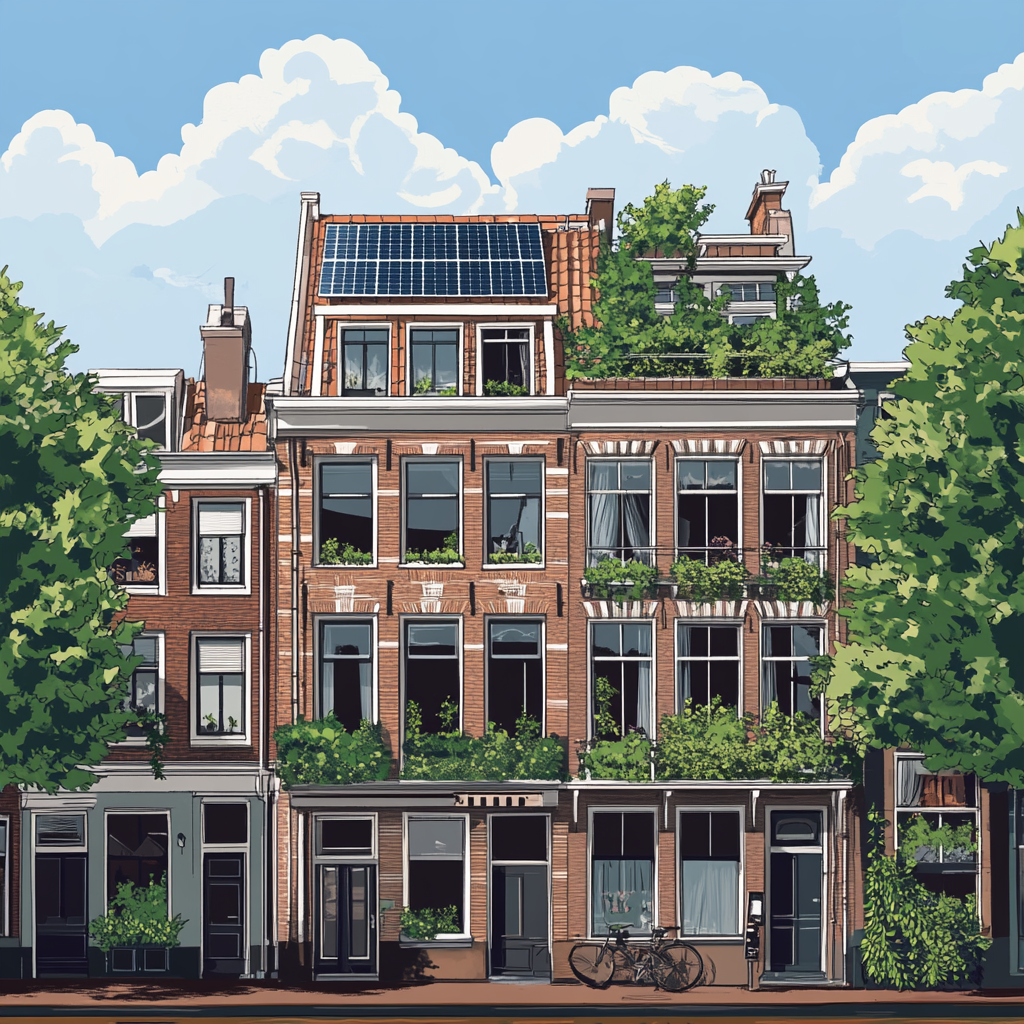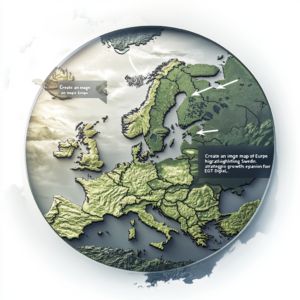
“Amsterdam Households Slash Energy Costs by Half with Innovative Experiment”
Hacking Amsterdam’s Energy Bill: The Road to Green Glory
Nestled amid its picturesque canals and vibrant tulip fields, Amsterdam is not just a city of bicycles and canals; it's the perfect stage for an electrifying experiment—one that digs deep into the heart of energy consumption like a determined hare digging for triumph. This is a story about energy savings, sustainability, and how people in the Dutch capital—home to clogs and canals—might just alter the path of their carbon footprints forever.
The Climate Dream: Amsterdam’s Bold Future
Think of Amsterdam not just as the land of wooden shoes and world-class museums, but as a frontrunner in the quest for a sustainable future. With ambitious goals of slashing its carbon emissions by an impressive 95% by 2050, the city’s battle begins by bidding adieu to natural gas by 2040. Why such drastic measures? Because when it comes to climate control, Amsterdam is all about balancing its rich historical heritage with an eye firmly fixed on tomorrow. Yes, the earth is in peril, and guess who wants to make that a thing of the past?
The Magic of Knowledge: Empowering the People
Picture this: A recent study kicks off in Amsterdam, and the key takeaway is surprisingly simple—information is power. When households understand their energy consumption, they’re better equipped to reduce their bills. We're talking cuts that could soar up to 50%. That's not just chump change! Imagine a busy household, suddenly empowered by knowledge, trading online shopping sprees for a more streamlined energy budget. Knowledge isn’t just power; it's a ticket to the energy efficiency show, and no one wants to miss opening night.
Energy Wizards: Retrofitting for Success
What really excites energy aficionados in the Netherlands is the “Reaching the High-Hanging Fruit” initiative. Teaming up with the AMS Institute and TU Delft, researchers are cooking up innovative strategies to ensure even Amsterdam's historical buildings enjoy the fruits of modern technology. That’s right; retrofitting is the name of the game—transforming ancient facades into energy-savvy installations. Let’s break it down:
- Interior wall insulation: They’re filling in those chilly gaps with up to 5 cm of insulation—bye-bye, condensation!
- Vacuum glass: Yes, it’s pricey, but think long term. Investing in windows that keep warmth in while keeping style intact? Not too shabby.
- Roof and ground floor insulation: It’s the great enveloping hug your house has been waiting for—keeping heat in and drafts out.
- Gaps and ventilation: Plugging holes while ensuring airflow keeps the atmosphere cozy without blasting that energy bill.
Heritage Meets Innovation: A Beautiful Fusion
Living in a UNESCO World Heritage site can be a double-edged sword. On one end, you bask in the splendor of architectural beauty; on the other, you grapple with the burdens of historical constraints. Yet, a retrofitting magic wand might just sprinkle a touch of sustainability fairy dust on these age-old structures. Research indicates that transforming non-protected buildings could reduce space heating demand by 4%, while incorporating heritage gems could ramp that number up to a staggering 23%. We’re talking mega savings here, folks! If every single building were transformed, we could knock off an eye-popping 59% of space heating demand citywide, sending 90 kilotons of CO2 packing!
Non-Residential: The Other Energy Heavyweights
Those quaint cafés and bustling hotels aren’t just charming backdrops for a day out; they account for a hefty slice of Amsterdam’s heating appetite. The secret weapon? Heat recovery ventilation. It’s like finding a treasure chest that promises savings between 30% and 50% on heating costs—who wouldn’t want a piece of that? Add to that the need for electric cooking (goodbye natural gas!), and we’ve got ourselves a recipe for a colorful energy palette.
Cash and Clean Air: The Double Whammy
Let’s not kid ourselves here; saving money feels just as good as saving the planet. Those energy-efficient measures lead to serious cash flow improvements. Take a cue from the UK’s plans for a clean power system, where households could save an estimated £300 annually by 2030. We're all for more money in the pocket while contributing to a greener tomorrow!
Your Turn, Homeowners: Get Involved!
These innovative changes hinge on the proactive participation of homeowners. Ready to roll up your sleeves? Here’s how you can join the green revolution:
- Insulate that castle: Make sure your home is snug as a bug in a rug—add insulation and ensure proper ventilation.
- Choose smart materials: Go for the good stuff like vacuum or HR++ glass that keeps your heating needs trimmed.
- Utilize local heat sources: Tap into canal water or even outside air. Getting creative could save you serious bucks!
- Raise your voice: Advocate for policies that support energy-efficient renovations, especially on those venerable heritage sites. Every word counts!
And Here We Lead into Tomorrow
The enticing experiment in Amsterdam serves as a glimmering beacon for cities grappling with energy costs and sustainability goals alike. With smart retrofitting and an informed populace, it’s entirely within reach for households to flip the script on energy bills. Balancing preservation with efficiency isn’t a dream—it’s a tangible reality.
Amsterdammers are showing that it’s not only possible to charge forward into a sustainable future while cherishing the past, but it’s crucial—both for their wallets and the world at large.
Want to stay up to date with the latest news on sustainable energy solutions and climate initiatives? Subscribe to our Telegram channel: @channel_neirotoken

